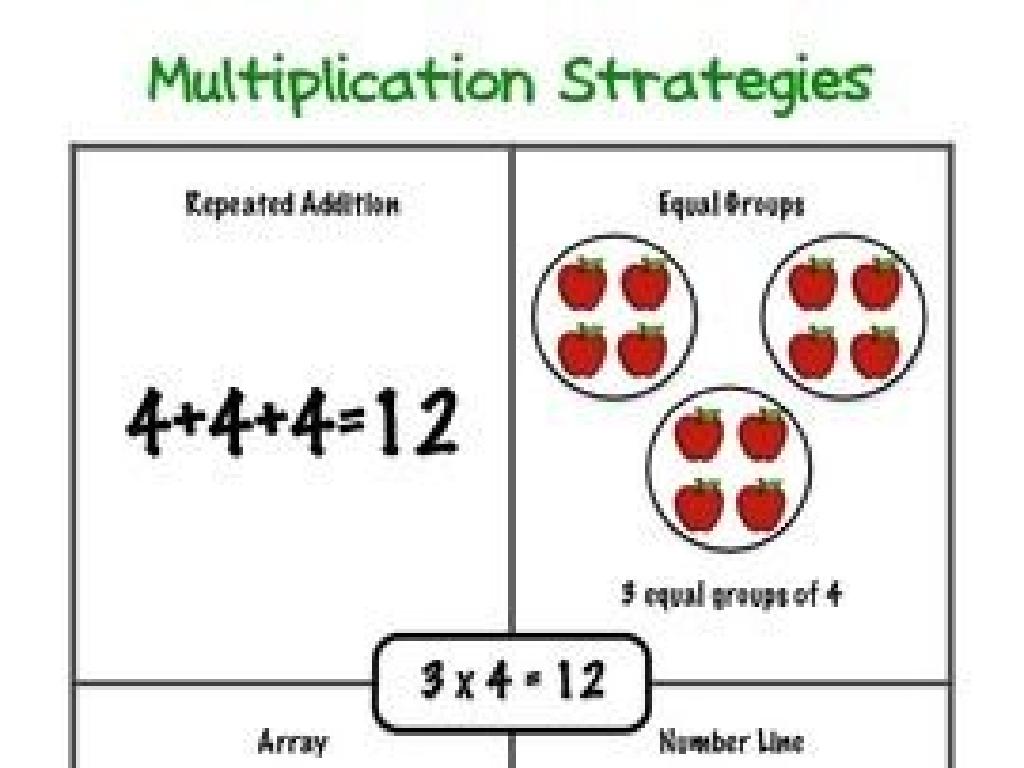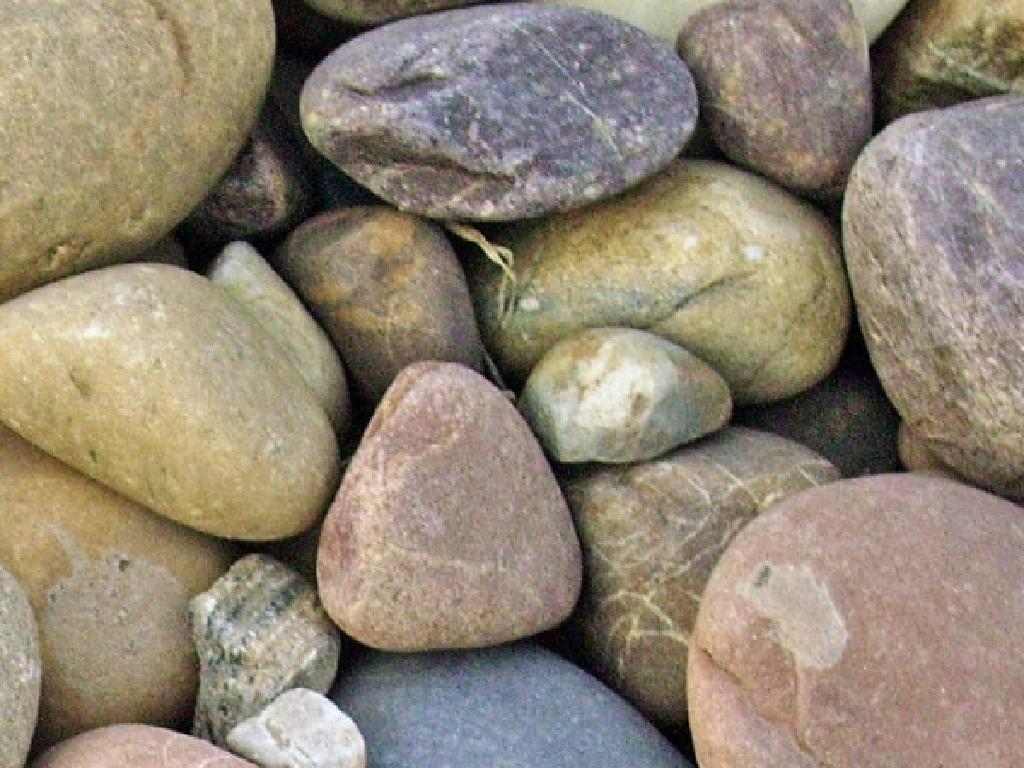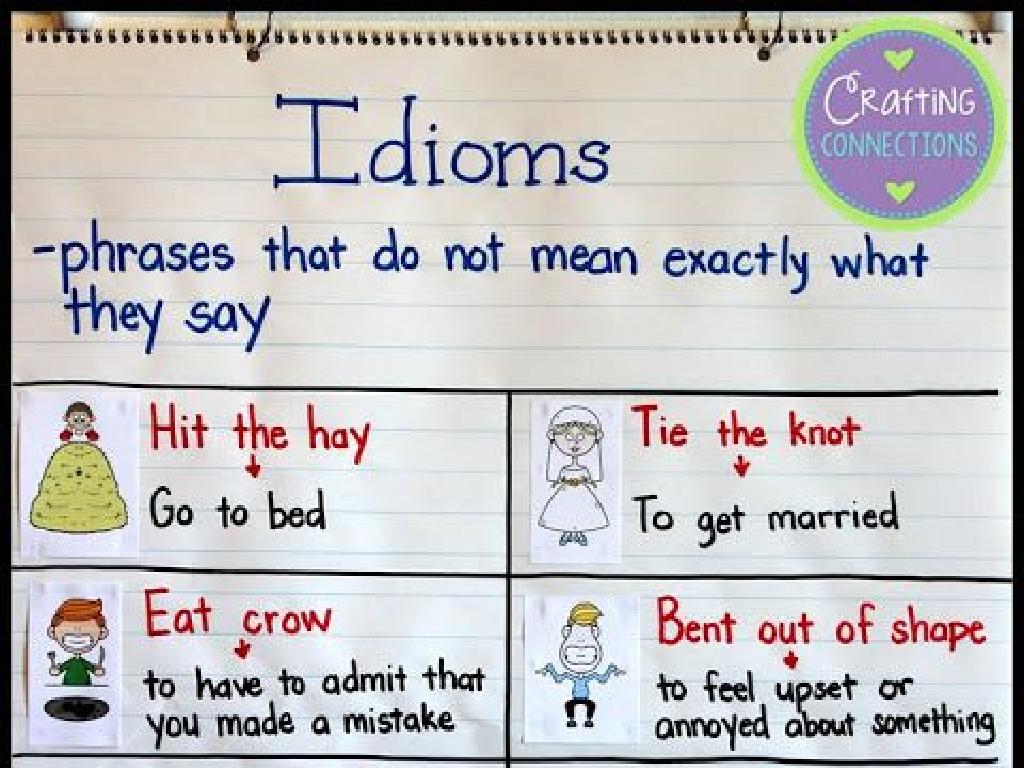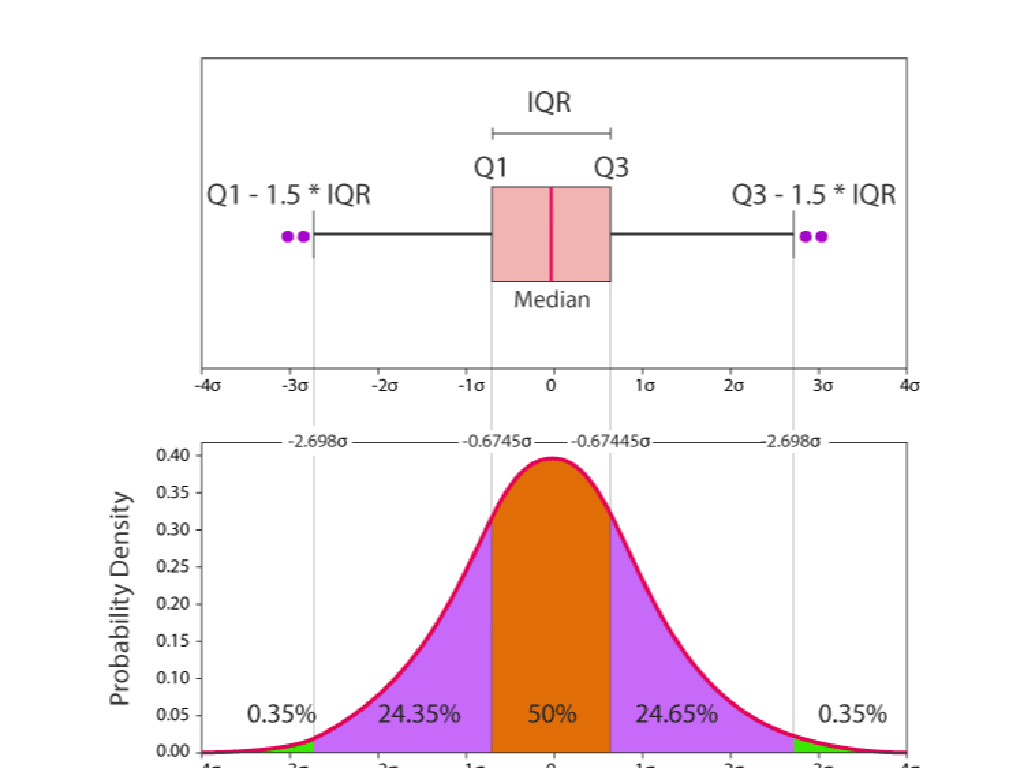Multiply To Find The Area Of A Rectangle Made Of Unit Squares
Subject: Math
Grade: Third grade
Topic: Area
Please LOG IN to download the presentation. Access is available to registered users only.
View More Content
Welcome to Area Adventure!: Understanding Area
– Discover what is Area
– Area measures space inside
– Like the space a carpet covers on a floor!
– Count unit squares to find area
– If a rectangle has 5 rows of 4 squares, how many squares are inside?
– Multiply length by width
– For a 5 by 4 rectangle, area is 5 times 4, which equals 20 unit squares.
|
This slide introduces the concept of area in an engaging way, suitable for a third-grade math class. Begin by explaining that area is a measure of how much space is inside a shape, using relatable examples like how much carpet is needed to cover a floor. Demonstrate counting unit squares in a rectangle to find its area, and then show how multiplying the length by the width gives the same result. Use visual aids like a grid with unit squares and encourage students to practice with different sized rectangles. This foundational understanding will help them grasp more complex area calculations in the future.
Discovering Rectangles Around Us
– Rectangles are all around us
– Spot rectangle shapes in class
– Look around! Desks, doors, books are rectangles
– List daily rectangle objects
– Think of windows, phones, and beds at home
– Understand rectangles in life
|
This slide is designed to engage third-grade students in recognizing rectangles in their immediate environment, fostering an understanding of the shape before delving into the concept of area. Encourage the students to observe and identify objects in the classroom that have a rectangular shape. This activity will help them relate the abstract concept of rectangles to concrete items they interact with daily. After identifying these objects, create a list on the board to visually reinforce the concept. This exercise sets the stage for further exploration of how we can use multiplication to find the area of rectangles, by first appreciating the prevalence of this shape in our lives.
Unit Squares: Building Blocks of Area
– What are unit squares?
Small squares that make up a shape.
– Unit squares in rectangles
Count the squares inside a rectangle.
– Measuring area with unit squares
Area equals the number of unit squares.
– Practice finding area
Let’s count together in different rectangles!
|
This slide introduces the concept of unit squares as the fundamental element for measuring area in rectangles. Begin by explaining that a unit square is a square with sides of one unit length. Then, show how these unit squares fit inside a rectangle to fill it up completely without any gaps or overlaps. Explain that the area of a rectangle is the total number of unit squares that can fit inside it. To practice, provide students with examples of rectangles divided into unit squares and guide them to count the squares to find the area. Encourage students to draw their own rectangles on graph paper and count the unit squares to reinforce the concept.
Multiplying to Find Area
– Area equals length times width
– Count rows and columns of squares
– If a rectangle has 5 rows and 4 columns, how many unit squares are there?
– Multiply length by width for area
– For a 5 by 4 rectangle, area is 5 x 4 = 20 unit squares
– Practice with a rectangle example
– Let’s try finding the area of a rectangle together!
|
This slide introduces the concept of finding the area of a rectangle using multiplication. Start by explaining that area is the size of a surface and is measured in square units. Show how to count the rows and columns of unit squares in a rectangle to find the length and width. Then, demonstrate how to multiply these two numbers to find the total area. Use a simple example, such as a 5×4 rectangle, to illustrate the process. Encourage students to practice with different rectangles and to visualize the multiplication as covering the surface with unit squares. This will help solidify their understanding of area as a measure of space.
Let’s Practice: Area of Rectangles
– Find rectangle areas
– Use Length x Width formula
– Multiply the longer side (length) by the shorter side (width)
– Share answers with classmates
– Understand area calculation
– Area tells us the size of a surface
|
This slide is for a class activity where students will apply their knowledge of area calculation to find the area of various rectangles using multiplication. Provide students with examples of different rectangles and guide them to identify the length and width. Remind them that the area is the number of unit squares that can fit inside the rectangle. Encourage them to use the formula (length x width) to calculate the area. After they have completed the calculations, ask them to share their answers with the class to foster a collaborative learning environment. This activity will help solidify their understanding of the concept of area and how to calculate it using multiplication.
Calculating Area with Picnic Blankets
– Picture a picnic blanket
– Count unit squares on the blanket
– Each square is 1 unit by 1 unit
– Multiply length by width
– Length times width gives area in unit squares
– Find the blanket’s area
|
This slide uses the relatable example of a picnic blanket to teach students how to calculate area in a practical context. Start by having students visualize or look at an actual picnic blanket, which helps ground the abstract concept of area in a real-world object. Guide them to count the unit squares along the length and width of the blanket, reinforcing the concept that area is a measure of how many squares fit inside a shape. Then, demonstrate how to multiply the length by the width to find the total area. This hands-on approach makes the mathematical concept of area tangible and understandable for third graders. Encourage students to think of other objects that could be measured in the same way, such as a book cover or a door.
Class Activity: Create Your Rectangle!
– Each student receives paper squares
– Build a rectangle using the squares
– Multiply length by width for area
– If your rectangle is 5 squares long and 3 squares wide, area is 5 x 3 = 15
– Record your findings
– Write down the length, width, and area
|
This hands-on activity is designed to help students understand the concept of area in a tangible way. Distribute an equal number of paper squares to each student and instruct them to form a rectangle. Guide them to count the squares along the length and width, and then multiply these numbers to calculate the area. Encourage them to write down their rectangle’s dimensions and the calculated area. This exercise will reinforce the formula for the area of a rectangle and provide a visual representation of the concept. Possible variations for different students could include using different colored squares, creating rectangles of specific areas, or challenging them to find the area of irregular shapes made from the squares.
Area Explorers: Homework Challenge
– Celebrate your hard work today
– Recall the area formula
– Area is found by multiplying the length by the width of a rectangle
– Draw 3 rectangles for homework
– Use a ruler to draw rectangles with different lengths and widths
– Calculate the area of each
– Count the unit squares inside or use the formula to find the area
|
Great job today, Area Explorers! As we wrap up, remember that the area of a rectangle is calculated by multiplying the length and the width. For homework, I want you to draw three different rectangles on a piece of graph paper. Make sure each rectangle has different dimensions. Then, calculate the area for each one by counting the unit squares inside the rectangle or by using the formula for area. This will help reinforce today’s lesson and prepare you for more complex problems. Be ready to share your rectangles and how you found their areas in our next class!




